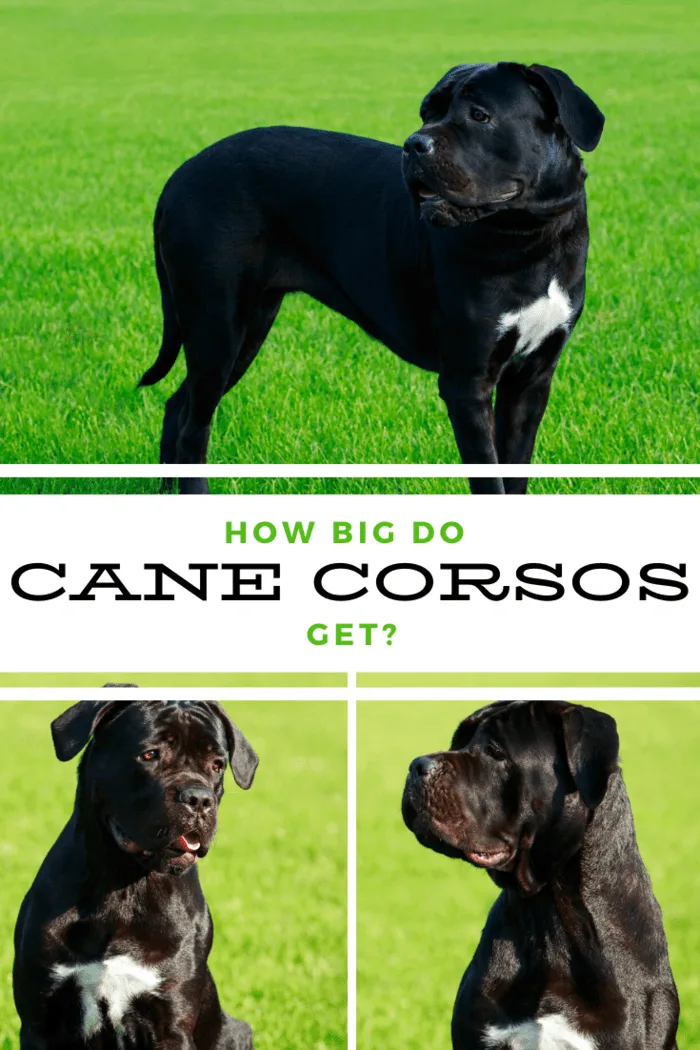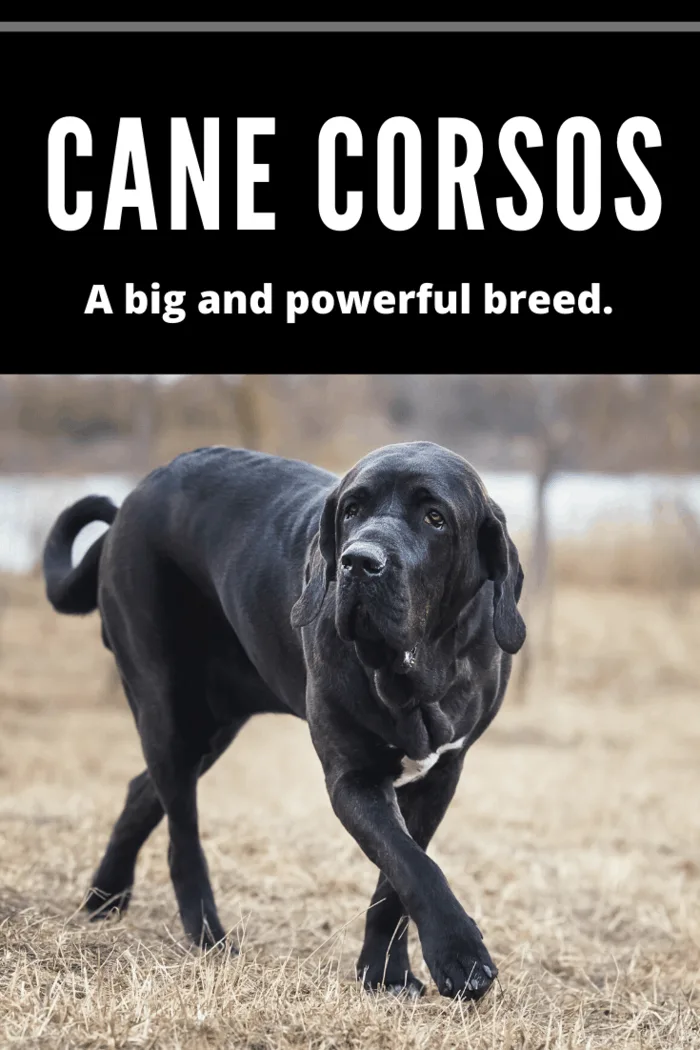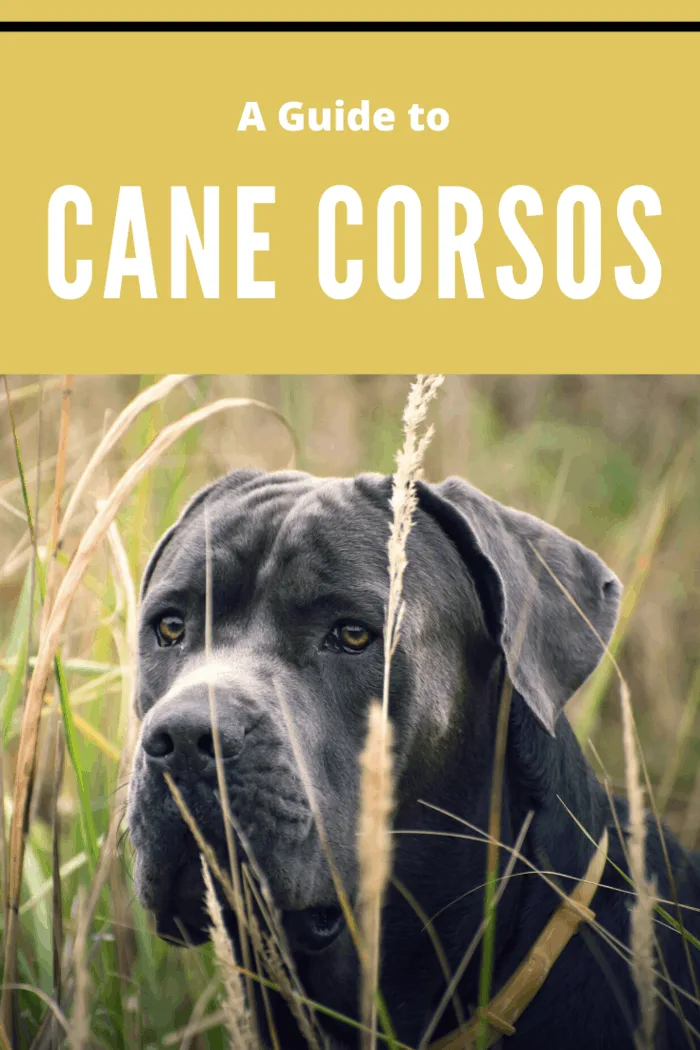How Big Do Cane Corsos Get?
Looking for a large breed dog and wondering, “How Big Do Cane Corsos Get?” Previously a rare breed known only in Southern Italy, Cane Corsos, or Italian Mastiffs, have seen their popularity soar worldwide. It’s no wonder! The Cane Corso is an impressive breed, boasting strong looks and a grand temperament. This large dog breed makes an excellent guard dog.

The Rich History of the Cane Corso
The Cane Corso, an Italian breed, has a storied history. Descended from ancient Molossian dogs, these dogs were used by the Roman army in battle, serving as protectors and combatants. The breed’s name translates from Latin as “bodyguard-dog,” underscoring its protective nature.
Despite its powerful presence, the Cane Corso’s role evolved over time. They were used for herding, hunting, and guarding livestock, especially prized for hunting wild boar. However, as farming became mechanized, the breed nearly faced extinction in the mid-20th century.
A group of dedicated enthusiasts revived the breed in the 1970s. In 1983, the Society Amatori Cane Corso was formed, and by 1988, Michael Sottile introduced the first litter to the United States. The American Kennel Club granted recognition in 2010, and the Cane Corso Association of America now governs the breed.
Fun Fact: If you’re considering a Cane Corso puppy, think about adopting one from a rescue group or shelter.

How Big Do Cane Corsos Get?
Cane Corsos are large and muscular dogs, typically weighing between 88 to 120 pounds (40 to 54 kg) and standing 23 to 28 inches (58 to 71 cm) tall at the shoulder. Females are generally smaller and lighter than males.
Breed Statistics:
- Height at the shoulder:
- Males: 25-27.5 inches
- Females: 23.5-26 inches
- Weight:
- Males: 100-110 pounds
- Females: 88-100 pounds
The Imposing Appearance of a Cane Corso
The Cane Corso is a large and muscular breed with a powerful, athletic appearance. They have a rectangular body shape, broad chest, straight back, and strong legs. Their large, square head features a short muzzle and a strong jaw. While some owners choose to crop their ears, many leave them natural. Their eyes are medium-sized and can be brown, hazel, or gray, sometimes with a brindle pattern.
Interesting Detail: Their coat is short and shiny, with colors ranging from black, gray, fawn, to red, often with white markings on the chest, feet, and face. The thick and loose skin forms wrinkles, especially around the neck and shoulders.

Health Considerations for Cane Corsos
Like all breeds, Cane Corsos are prone to specific health issues. Here are some common ones:
- Hip Dysplasia: Improper formation of the hip joint causing pain.
- Dilated Cardiomyopathy: Weakening of the heart muscle leading to heart failure.
- Cherry Eye: Protrusion of the gland in the third eyelid.
- Entropion: Eyelids rolling inward causing irritation.
- Gastric Torsion or Bloat: Life-threatening twisting of the stomach.
Breed Personality
Cane Corsos are known for their loyal and protective personality. Affectionately dubbed “velcro dogs,” they love to be close to their family. Intelligent and trainable, they excel in obedience training and other activities. Their watchful and alert nature makes them excellent guard dogs. Early socialization is crucial to ensure they behave well around strangers and other animals.

Is the Cane Corso a Good Family Pet?
Absolutely! With proper socialization and training, Cane Corsos make loyal and protective family pets. They are generally gentle with children and very affectionate with family members. However, due to their size and strength, they may not be suitable for families with very young children or inexperienced dog owners.
Pro Tip: If considering a Cane Corso, research the breed thoroughly and work with a reputable breeder who conducts health tests. Consult a professional dog trainer or behaviorist to ensure you’re prepared to handle this magnificent breed.
Now that you know more about the Cane Corso breed, you can learn more about the other best large family dog breeds.
Cane Corso Health Issues:
Like all dog breeds, Cane Corsos are prone to certain health issues that prospective owners should be aware of.
Here are some of the most common health issues that can affect Cane Corsos:
- Hip Dysplasia: A common orthopedic condition where the hip joint does not form correctly, causing pain and mobility issues.
- Dilated Cardiomyopathy: A heart condition that causes the heart muscle to weaken and enlarge, leading to heart failure.
- Cherry Eye: A condition where the gland in the third eyelid protrudes, causing redness and swelling in the eye.
- Entropion: A condition where the eyelids roll inward, causing the eyelashes to rub against the eye and leading to irritation and infection.
- Gastric Torsion or Bloat: A life-threatening condition where the stomach twists and fills with gas, causing abdominal pain, bloating, and shock.
It’s important to work with a reputable breeder who conducts health tests on their dogs and to keep up with regular veterinary check-ups to catch any health issues early. Proper diet, exercise, and care can also help to prevent some of these health problems.
Pet insurance can help you give your dog the best care when needed and help in the event of unexpected illness or accidents.
Final Thoughts
Cane Corsos require consistent training and socialization. They thrive in environments where they can be exposed to various sights, sounds, people, and experiences from an early age. This helps them become well-rounded and friendly.

